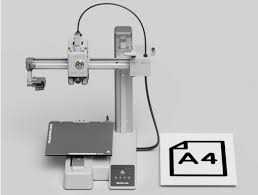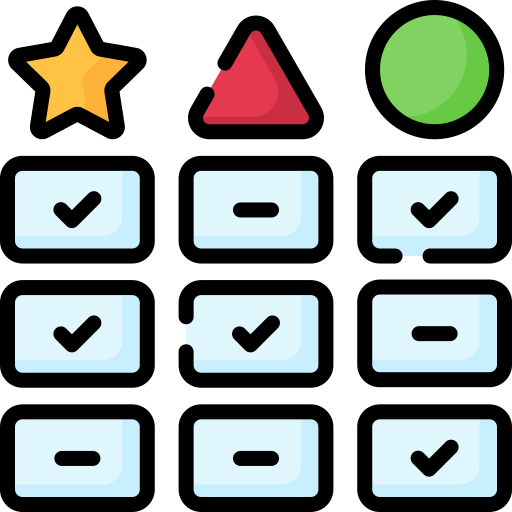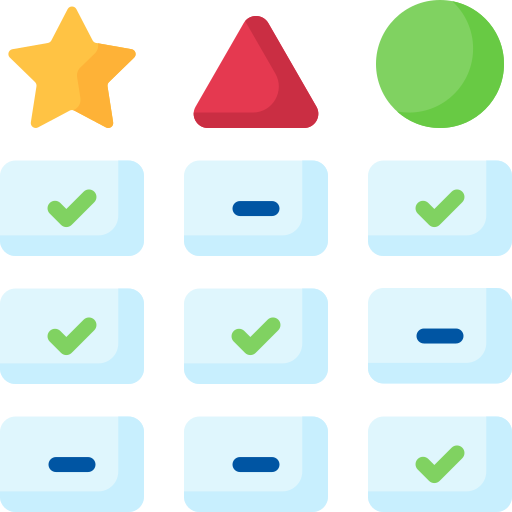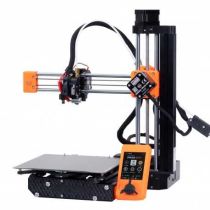Prusa3D Mini Plus
- Lowest price: $169
- Median price: $499
- Highest price: $15000




Expert consensus
The Prusa3D Mini+ 3D printer is a reliable and high-quality printer with a small build volume, easy-to-use controls, and compatibility with a wide range of filaments, making it suitable for hobbyist and professional applications, as well as laboratory and classroom environments.
The Prusa3D Mini+ 3D printer is a reliable and high-quality printer that produces exceptional print quality with smooth lines and little to no stringing. It has a small build volume of 180mm x 180mm x 180mm, making it ideal for those with limited desk space or those who primarily print smaller objects.
The printer is easy to use, with an LCD screen and rotary knob for easy control of various printer settings, and an auto-leveling protocol that ensures the bed is always properly calibrated. It is highly compatible with a wide range of filaments, including standard materials like PLA, PETG, and ABS, as well as flexible and high-temperature materials like TPU, TPE, NylonX, and Polycarbonate.
The Prusa3D Mini+ is suitable for a variety of use cases, including hobbyist and professional applications, as well as laboratory and classroom environments. However, if you plan on printing larger objects, it may be worth considering a 3D printer with a larger build volume.
Print quality
The Prusa3D Mini+ 3D printer is highly praised for its exceptional print quality, precision, and ability to handle a wide range of filaments.
The Prusa3D Mini+ 3D printer is highly praised for its exceptional print quality, capable of producing prints with smooth lines and little to no stringing. With a maximum resolution of 50 microns, the printer can handle complex geometries and intricate details with great precision. The printer's auto-leveling protocol ensures that the bed is always properly calibrated, resulting in precise prints.
The Prusa3D Mini+ is also capable of printing with a wide range of filaments, including PLA, PETG, and ABS.
What is the maximum resolution that can be achieved with the Prusa3D Mini Plus?
Based on 1 quotes from 1 sources [show quotes and sources]
What is the level of print accuracy achieved by the Prusa3D Mini Plus printer?
Based on 4 quotes from 3 sources [show quotes and sources]
What is the consistency of the Prusa3D Mini Plus printer?
Based on 2 quotes from 2 sources [show quotes and sources]
How does the Prusa3D Mini Plus handle complex geometries and intricate details?
Based on 5 quotes from 2 sources [show quotes and sources]
What materials is the Prusa3D Mini Plus capable of printing with?
Based on 2 quotes from 1 sources [show quotes and sources]
Build volume
The Prusa3D Mini+ 3D printer has a small build volume of 180mm x 180mm x 180mm, which may limit its ability to print larger objects, but most users have not had major issues with the smaller build plate.
The Prusa3D Mini+ 3D printer has a small build volume of 180mm x 180mm x 180mm, which may limit its ability to print larger objects. The smaller build plate size may also be a concern for some users. However, according to hagensieker.com, most users have not had major issues with the smaller build plate and have been able to print most things on it.
Therefore, the Prusa3D Mini+ may be suitable for those who primarily print smaller objects or do not require a larger build volume. However, if you plan on printing larger objects, it may be worth considering a 3D printer with a larger build volume.
What is the build volume of the Prusa3D Mini Plus 3D printer?
Based on 1 quotes from 1 sources [show quotes and sources]
What is the build volume of the Prusa3D Mini Plus 3D printer?
Based on 1 quotes from 1 sources [show quotes and sources]
What are the features and capabilities of the Prusa3D Mini Plus that may impact its ability to print larger objects?
Based on 2 quotes from 2 sources [show quotes and sources]
Ease of use
The Prusa3D Mini+ 3D printer is a user-friendly and compact option for makers, laboratories, and classrooms, with easy controls, setup, and filament loading, as well as compatibility with the Prusa Slicer software.
The Prusa3D Mini+ 3D printer is designed to be easy and straightforward to use, making it a great choice for makers who are short on space, as well as laboratory and classroom environments. The LCD screen and rotary knob allow for easy control of various printer settings, while the controls are located in one location on the side of the printer.
The setup process is also easy and straightforward, with a custom instruction manual provided by Prusa. The Prusa Slicer software is user-friendly and provides excellent compatibility with the printer. The printer offers an auto-leveling protocol, a SuperPINDA sensor, and easy filament loading and unloading, making it easier to get started with printing.
Overall, the Prusa3D Mini+ is a great choice for those looking for a quality experience in a compact and lightweight design.
What is the user interface like for Prusa3D Mini Plus?
Based on 2 quotes from 1 sources [show quotes and sources]
What is the setup process like for the Prusa3D Mini Plus 3D printer?
Based on 8 quotes from 1 sources [show quotes and sources]
What software is required to operate the Prusa3D Mini Plus, and how user-friendly is it?
Based on 2 quotes from 1 sources [show quotes and sources]
What are the key features and specifications of the Prusa3D Mini Plus 3D printer?
Based on 15 quotes from 3 sources [show quotes and sources]
What additional features or tools does the Prusa3D Mini Plus offer that make it easier to use compared to other 3D printers?
Based on 10 quotes from 2 sources [show quotes and sources]
Features
The Prusa3D Mini+ 3D Printer is a compact and high-quality printer with auto-leveling, a Super Pinda sensor, and a Bowden extruder, making it ideal for those with limited desk space and a great choice for laboratories or classrooms.
The Prusa3D Mini+ 3D Printer is a compact and single-unit design printer with a small build volume of 180mm x 180mm x 180mm, making it ideal for those with limited desk space. It features an auto-leveling protocol that scans the bed for distortion and adjusts the printing accordingly, a Super Pinda sensor that improves the first layer calibration, and a 3D printed rotary knob that allows for easy navigation of the LCD screen.
The printer's Bowden extruder is designed to provide high-quality prints with a variety of filaments. While it does not have built-in wireless connectivity, it has an RJ-45 ethernet jack and the possibility of future inclusion of a wifi chip. The Prusa3D Mini+ produces better prints than other printers in its price range and is a great choice for laboratories or classrooms.
Does the Prusa3D Mini Plus have automatic bed leveling capabilities?
Based on 2 quotes from 1 sources [show quotes and sources]
Does the Prusa3D Mini Plus have dual extruders?
Based on 1 quotes from 1 sources [show quotes and sources]
Does the Prusa3D Mini Plus have wireless connectivity?
Based on 2 quotes from 2 sources [show quotes and sources]
What unique features does the Prusa3D Mini Plus have compared to other 3D printers?
Based on 11 quotes from 2 sources [show quotes and sources]
What are the additional features of the Prusa3D Mini Plus printer and how do they affect the overall printing experience?
Based on 17 quotes from 3 sources [show quotes and sources]
Reliability
The Prusa3D Mini+ 3D printer is a reliable and high-quality printer that requires regular maintenance, supports a wide range of filaments, and is suitable for hobbyist and professional applications.
According to expert reviews, the Prusa3D Mini+ 3D printer is a reliable and high-quality printer that requires regular maintenance to ensure optimal performance. The manufacturer recommends cleaning and lubricating the printer's rods and bearings every 150-200 hours of printing, checking the tension of the belts every 300-400 hours, and replacing the nozzle every 500-1000 hours.
Some common issues that users have reported include imperfect print quality, the reel sitting separately, and calibration being tricky. However, Prusa provides detailed instructions on how to optimize prints and troubleshoot issues. The Prusa Mini+ supports a wide range of filaments, with the official Prusa brand filament being recommended for best results.
What is the typical lifespan of the Prusa3D Mini Plus 3D printer?
What is the recommended maintenance schedule and type of maintenance required for the Prusa3D Mini Plus 3D printer?
What are the common issues or problems that users have reported with the Prusa3D Mini Plus printer?
Based on 4 quotes from 3 sources [show quotes and sources]
What are the common issues that arise with Prusa3D Mini Plus and how easy are they to troubleshoot and fix?
Based on 5 quotes from 2 sources [show quotes and sources]
Compatibility
The Prusa3D Mini+ 3D printer is highly compatible with a wide range of filaments, including standard, flexible, and high-temperature materials, and can produce beautiful results with both official brand and off-brand filament.
The Prusa3D Mini+ 3D printer is highly compatible with a wide range of filaments, including standard materials like PLA, PETG, and ABS, as well as flexible and high-temperature materials like TPU, TPE, NylonX, and Polycarbonate. While Prusa recommends using its official brand filament for optimal performance, the printer can also work with off-brand filament and still produce beautiful results.
However, it's important to make sure any filament used has been properly stored and isn't too brittle. The printer does not require any additional accessories or modifications for using standard materials, but some users may choose to upgrade to a SuperPINDA sensor for improved first layer calibration when printing.
What types of materials are compatible with the Prusa3D Mini Plus 3D printer?
Based on 2 quotes from 1 sources [show quotes and sources]
What types of filaments are compatible with the Prusa3D Mini Plus 3D printer?
Based on 5 quotes from 2 sources [show quotes and sources]
Can the Prusa3D Mini Plus handle flexible or high-temperature materials?
Based on 2 quotes from 1 sources [show quotes and sources]
Are there any specific brands or types of filaments that are recommended for use with Prusa3D Mini Plus?
Based on 6 quotes from 1 sources [show quotes and sources]
Are there any additional accessories or modifications required to use certain materials with the Prusa3D Mini Plus printer?
Based on 4 quotes from 1 sources [show quotes and sources]

Expert Reviews
There are people on the Internet whose job is to review products. Below are their opinions.
ReviewFinder database has 3 expert reviews of Prusa3D Mini Plus.
Expert reviews [3]
- with a score: 2
- without a score: 1
| Highest score by Tom's Hardware |
80
|
| Average score based on 3 reviews |
80
|
| Lowest score by All3DP |
80
|
Score distribution:
| 80-100 |
|
| 60-80 |
|
| 40-60 |
|
| 20-40 |
|
| 0-20 |
|

Best Alternatives
3 best 3d printers in the same price range as Prusa3D Mini Plus

|

|

|
| Bambu Lab P1S | Bambu Lab A1 Mini | Bambu Lab X1 Carbon |
|
Rank
#1
out of 166
|
Rank
#2
out of 166
|
Rank
#3
out of 166
|
| The Bambu Lab P1S 3D printer is highly regarded for its print quality, accuracy, consistency, and ability to handle complex geometries and intricate details, making it a versatile and high-performing printer suitable for a wide range of printing projects. |
Expert consensus not yet generated.
|
Expert consensus not yet generated.
|
| More product details | More product details | More product details |

Position in ranking
We maintain a monthly ranking that sums up expert recommendations for all 3D printers.
| Rank | Change | Price | 3D Printer |
Wirecutter
|
Tom's Hardware
|
All3DP
|
TechRadar
|
Tom's Guide
|
Omnicore
|
PCMag
|
Digital Trends
|
Popular Mechanics
|
CNET
|
|---|---|---|---|---|---|---|---|---|---|---|---|---|---|
|
1
|
+1 | Check price |
 Bambu Lab P1S
Bambu Lab P1S
The Bambu Lab P1S 3D printer is highly regarded for its print quality, accuracy, consistency, and ability to handle complex geometries and intricate details, making it a versatile and high-performing printer suitable for a wide range of printing projects.
|
-
|
1
|
1
|
-
|
-
|
-
|
-
|
-
|
-
|
1
|
|
2
|
-1 | Check price |
 Bambu Lab A1 Mini
Bambu Lab A1 Mini
|
1
|
10
|
2
|
-
|
-
|
-
|
-
|
-
|
-
|
3
|
|
3
|
+1 | Check price |
 Bambu Lab X1 Carbon
Bambu Lab X1 Carbon
|
2
|
8
|
5
|
-
|
-
|
-
|
-
|
-
|
-
|
-
|
|
4
|
+2 | Check price |
 LulzBot Mini 2
LulzBot Mini 2
The LulzBot Mini 2 is a versatile and reliable 3D printer that produces high-quality prints with a wide range of materials and an easy-to-use interface.
|
-
|
-
|
-
|
-
|
-
|
8
|
10
|
2
|
-
|
-
|
|
5
|
+3 | $199 |
 Creality Ender 3 V2
Creality Ender 3 V2
The Creality Ender 3 V2 is an affordable and reliable 3D printer that produces high-quality prints and is suitable for hobbyists, makers, and small businesses.
|
-
|
-
|
-
|
-
|
-
|
3
|
-
|
-
|
4
|
-
|
|
6
|
+3 | $300 |
 Anycubic Kobra 2
Anycubic Kobra 2
The Anycubic Kobra 2 3D printer is highly praised for its impressive print quality, user-friendly interface, and range of convenient features, making it a versatile and reliable option for both beginners and experienced users.
|
-
|
-
|
-
|
-
|
-
|
-
|
3
|
-
|
-
|
5
|
|
13
|
-8 | Check price |
 Original Prusa MK4
Original Prusa MK4
The Original Prusa MK4 3D printer is highly regarded for its exceptional print quality, reliability, and ease of use, making it a top choice for professionals, hobbyists, and educators.
|
-
|
-
|
-
|
7
|
-
|
-
|
-
|
-
|
-
|
2
|
|
14
|
+1 | Check price |
 Formlabs Form 3+
Formlabs Form 3+
The Formlabs Form 3+ 3D printer is highly praised for its exceptional print quality, precision, and consistency, making it suitable for a wide range of professional applications.
|
-
|
-
|
-
|
-
|
3
|
-
|
7
|
-
|
-
|
-
|
|
15
|
-8 | $219 |
 Creality Ender 3 V3 SE
Creality Ender 3 V3 SE
|
-
|
5
|
4
|
-
|
-
|
-
|
-
|
-
|
-
|
-
|
|
16
|
- | $285 |
 Elegoo Neptune 4 Pro
Elegoo Neptune 4 Pro
|
-
|
4
|
-
|
6
|
-
|
-
|
-
|
-
|
-
|
-
|
|
17
|
- | $1999 |
 Dremel Digilab 3D45
Dremel Digilab 3D45
The Dremel Digilab 3D45 3D Printer is a reliable and consistent printer that delivers exceptional print quality and accuracy, making it an excellent choice for professionals and small businesses.
|
-
|
-
|
-
|
-
|
-
|
7
|
-
|
-
|
5
|
-
|
|
18
|
- | $1978 |
 MakerBot Replicator+
MakerBot Replicator+
The MakerBot Replicator+ 3D printer is a reliable and accurate option for professionals who require faster and more precise printing, as well as easier management and monitoring of projects through the powerful software solution.
|
-
|
-
|
-
|
-
|
-
|
-
|
6
|
-
|
6
|
-
|
|
19
|
- | Check price |
 FlashForge Adventurer 4
FlashForge Adventurer 4
The FlashForge Adventurer 4 is a versatile and reliable 3D printer suitable for a variety of use cases, producing excellent quality prints with complex geometries and intricate details, and offering advanced features and tools for easy use.
|
-
|
-
|
-
|
-
|
5
|
-
|
-
|
-
|
-
|
9
|
|
20
|
- | Check price |
 Anycubic Photon Mono 2
Anycubic Photon Mono 2
The Anycubic Photon Mono 2 is a highly recommended resin-based 3D printer that offers excellent print quality, a larger build volume, and user-friendly features, making it ideal for printing miniatures and intricate designs.
|
-
|
13
|
-
|
-
|
-
|
-
|
-
|
-
|
-
|
7
|
|
21
|
- | $299 |
 Toybox 3D 1-Touch
Toybox 3D 1-Touch
The Toybox 3D 1-Touch printer is a user-friendly and reliable 3D printer designed for children and beginners, with a simple one-touch interface, access to a large library of printable toys and projects, and compatibility with safe and biodegradable PLA filaments.
|
-
|
-
|
11
|
-
|
-
|
-
|
9
|
-
|
-
|
-
|
|
22
|
- | $549 |
 SnapMaker Artisan
SnapMaker Artisan
The SnapMaker Artisan 3-in-1 3D printer is highly praised for its high print quality, large build volume, ease of use, and compatibility with various materials, making it a reliable and versatile option for users in need of precise and high-quality prints.
|
-
|
15
|
10
|
-
|
-
|
-
|
-
|
-
|
-
|
-
|
|
23
|
- | $510 |
 Anycubic Photon Mono M5S
Anycubic Photon Mono M5S
The Anycubic Photon Mono M5s is a highly recommended resin 3D printer that offers exceptional print quality, ease of use, and compatibility with various resin materials, making it suitable for users who prioritize high-resolution and detailed prints.
|
-
|
14
|
13
|
-
|
-
|
-
|
-
|
-
|
-
|
-
|
| Show all rows | |||||||||||||

Highest recommended 3d printers this month
ReviewFinder ranks based on a combination of customer reviews, expert reviews / mentions and popularity. Expert recommendations carry the highest weight in the ranking. We do not rank based on price, our commission or brand. 3d printers below are at the top of our ranking this April.

|

|

|

|
| Bambu Lab P1S | Bambu Lab A1 Mini | Bambu Lab X1 Carbon | LulzBot Mini 2 |
|
Rank
#1
out of 166
|
Rank
#2
out of 166
|
Rank
#3
out of 166
|
Rank
#4
out of 166
Reviews
|
|
|
|||
| The Bambu Lab P1S 3D printer is highly regarded for its print quality, accuracy, consistency, and ability to handle complex geometries and intricate details, making it a versatile and high-performing printer suitable for a wide range of printing projects. |
Expert consensus not yet generated.
|
Expert consensus not yet generated.
|
The LulzBot Mini 2 is a versatile and reliable 3D printer that produces high-quality prints with a wide range of materials and an easy-to-use interface. |
| More product details | More product details | More product details | More product details |












